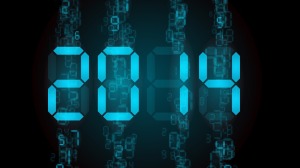Top 5 Technology Law Cases of 2014
New Year’s is always a time for remembrance and nostalgia, with lots of “top” lists. This is another, focused on the most important, entertaining and reverberating technology law cases of 2014.
1. Apple’s iPod Class Action Win. Near the end of the year, a decade-old antitrust class action against Apple Inc. finally went to trial in early December. The gist of the claim was that by reconfiguring its DRM system for the then new (now iconic) iPod MP3 players in a way that broke compatibility with RealNetworks’ protocol back in 2006, Apple monopolized the market for digital music. Although the Sherman Act theory was questionable, at best, the presiding federal judge refused to dismiss the complaint or enter summary judgment for either side. After just three hours of deliberations, the jury returned a unanimous verdict for Apple, finding that the new software was a meaningful product improvement over previous versions. (This was also the case where the late Steve Jobs testified, by way of videotaped deposition, from the grave.) Lesson: even monopolists get the blues.
2. Software & Business Methods Patents Narrowed. In one of several precedent-setting Supreme Court cases involving intellectual property, the Court ruled in Alice Corp. v. CLS Bank that vague or generic patents, which do little more than operate mathematical algorithms on a general purpose computer, are not “patentable subject matter.” CLS Bank has already had a profound effect on the Court of Appeals for the Federal Circuit, which for nearly the first time invalidated some business method patents on patentablity grounds in its wake, and the the U.S. Patent & Trademark Office, which was far more aggressive in rejecting patent applications during the second half of the year. The longer term consequences in the ongoing debate over patent trolls and patent reform legislation remain to be seen. Lesson: the era of easy patents may be ending.
3. Aereo & Remote DVRs. Chet Kanojia’s highly visible and disruptive startup, Aereo, found a business niche streaming broadcast network television programming over the Internet for a fee. Problem was, that niche was based on extension of the Sony Betamax principle to the cloud, and the Supreme Court felt otherwise, holding that despite making a unique digital copy for each recipient, Aereo’s streams violated the public performance clause of the federal Copyright Act. Left untouched, so far, was the Second Circuit’s 2008 ruling in Cablevision (Cartoon Network, LP v. CSC Holdings, Inc.), the controversial doctrine that cloud-based digital recordings are not copyright violations when initiated by the user. Many legal pundits were dismayed by the superficial quality of the Supreme Court’s reasoning, which essentially was that Aereo looked and acted like a cable television system; that proved a double whammy when the Copyright Office and the federal courts denied Aereo access to the compulsory license available by statute to cable systems, leading to the company’s recent bankruptcy. Lesson: don’t count on à la carte TV without a license.
4. The FTC’s Data Protection Jurisdiction. The Federal Trade Commission has established a well-deserved reputation as America’s national privacy regulator, from the Do-Not-Call telemarketing list to enforcing website privacy policies, under its Section 5 powers with respect to unfair or deceptive acts and practices (UDAP). Although the agency has charged dozen of firms with UDAP liability for cyber breaches, all of those cases had been settled. Then Wyndham Resorts decide to challenge the FTC’s Section 5 authority over cybersecurity, arguing that the absence of “reasonable” data safeguards, standing alone (i.e., without misleading statements), was beyond the FTC’s jurisdiction. In April, a New Jersey federal court sided decisively with the agency in FTC v. Wyndham Hotels & Resorts, LLC, a case currently on appeal. Lesson: section 5 is really, way broad.
5. Are APIs Copyright-Protected? Back in 2012, San Francisco federal judge William Alsup ruled in Oracle Corp. v. Google that APIs are not subject to copyright. The court clearly understood that holding otherwise would have dangerously allowed one company to tie up “a utilitarian and functional set of symbols,” which provides the basis for so much of the innovation and collaboration the entire tech space all rely on today. As the district court reasoned, where “there is only one way to declare a given method functionality, [so that] everyone using that function must write that specific line of code in the same way,” that coding language cannot be subject to copyright. Fast forward to 2014, however, when in May the Federal Circuit — known to practitioners as the “CAFC” — disagreed, deciding in a mammoth opinion that Java’s API packages were copyrightable, then sending the case back to the trial court to determine whether Google’s copying was nonetheless a lawful fair use. My Project DisCo colleague Jonathan Band calls that appellate decision “poorly reasoned” and notes that it “upset[s] well-established practices in the computer industry that encourage interoperability and competition.” Maybe the Supreme Court will fix this mess in 2015. Lesson: the CAFC screws up, again, big time.
I may have missed a few, some of which were newsworthy in 2014 but actually decided earlier. Hence, honorable mention must go to United States v. Apple Inc., where the Department of Justice is now defending its 2013 civil price-fixing judgment against Apple in the e-books market before the Second Circuit. The government’s theory was that Apple facilitated a group decision by all major book publishers to adopt a consignment sales model for e-books sold on the iTunes store, in an effort to increase retail prices to consumers (and counteract Amazon’s market dominance). That forthcoming appellate decision, when issued, could well be number 1 with a bullet on next year’s list. Lesson: even new entrants fighting monopolists can get the blues.









